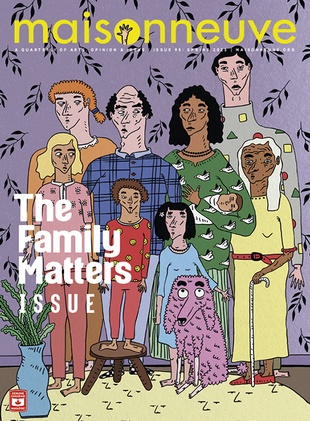A Pedestrian Cause
A look at Mongkok, China's themed streets and street markets
Like a feverish dream, Mongkok comes alive at night. Thick crowds grow thicker with the onset of dusk, as the glow of giant billboards consumes its neighbourhoods. Flickering neon bathes the narrow streets in shades of scarlet and ochre-it's like the Hong Kong you've always imagined.
Mongkok is located in Kowloon, the earthier cousin to the more famous Hong Kong island. Mongkok-or Wong gok, more accurately-is Cantonese for "busy place" and really, there couldn't be a more apt description of this Hong Kong area, boiled down to its most energetic, narcissistic and astounding self. It's part of one of the most densely populated places on earth: the Yau Tsim Mong District hosts over 300,000 residents in an area of less than three square miles.
Barely sixty years ago though, Mongkok was a low-rise district on the outskirts of Kowloon. The influx of thousands of mainland Chinese refugees during the nineteen-fifties and nineteen-sixties transformed it into a crossroads of commerce, regional transportation and everyday neighbourhood life. Now, tens of thousands of people flock to the area's markets, shops and offices every day. More than 20,000 people spill out of the Mongkok subway station daily-and that doesn't include the thousands more who come by bus, taxi or foot. At peak periods, some 16,000 people will stroll down the pedestrian-only Sai Yeung Choi Street every hour.
Mongkok owes its character to two key ingredients: street markets and theme streets. Half a century ago, the urban observer Jane Jacobs noted that businesses of a specific nature tend to congregate around one another-nowhere is this phenomenon more obvious than in Mongkok. Streets specializing in sport shoes, fish, hardware, flowers, electronics and more can be found scattered around the district. "Theme streets" might be a tacky term, conjuring up images of Disneyland or Las Vegas, but in reality they help Mongkok attract diverse crowds of people.
The theme streets are complemented by Mongkok's three street markets: Nelson Street, in the east, is a local food market where vendors hawk fruits, veggies and dried goods amidst the corner's many fishmongers. On the other side of the neighbourhood, the narrow, claustrophobic Tung Choi Street-better known as "Ladies Street"-contains more than a thousand stalls selling clothing, music, movies and junky souvenirs. The best market however, is a few blocks further north on Fa Yuen Street. Its 222 stalls-with still more stores on the sides-sell some of the city's cheapest clothes, bags and accessories.
Street markets such as the one in Fa Yuen Street owe their existence to a 1979 law designed to control hawkers by grouping them into single locations. The markets' number of stalls, the size of each stall and their hours of operation are regulated by the Food and Environmental Hygiene Department. Fa Yuen Street and Ladies Street are both open until 11 PM, while night-markets in other neighbourhoods are open later. Every night, after closing, vendors must remove their stalls from the street.
Navigating Mongkok's streets is a task best avoided by the crowd-shy. Still, even those who revel in urban cacophony will find the constant crush of pedestrians tiring. The narrowness of many Mongkok sidewalks and the near-total lack of street "furniture"-there are few trees and even fewer places to sit-don't help.
Soon, however, that may change. Earlier this month, Hong Kong's Planning Department announced a new study that will conjure up ways to better Mongkok's pedestrian environment. The chief objective will be to improve connections between different parts of Mongkok. "We'd look into how we could improve linkage among the theme streets," explains W. S. Lau, Senior Town Planner with the Planning Department. Just as important will be improving Mongkok's pedestrian environment by widening sidewalks, upgrading street furniture, planting trees and reducing the number of vehicles that enter the district centre. Most ambitiously, Nathan Road-Mongkok's frenetic main artery-could be transformed into a bus-only street. This would make room for extra-wide sidewalks, greenery and, possibly, Lau adds, public art.
Lau is hesitant to hold up any other Hong Kong neighbourhood as a model for a Mongkok makeover, but he does mention Causeway Bay, the glitzy Hong Kong Island shopping district that is the saccharine Cantopop to Mongkok's rock 'n' roll (or, at the very least, Mongkok's Taiwanese pop-punk). With much wider sidewalks, a tighter network of pedestrian streets and far more greenery, Causeway Bay might be a good point of reference for any changes made to Mongkok. Still, Lau is quick to note, "Each district [has] a different character. We want to keep this and even promote it." That means emphasizing what Mongkok already has, namely the theme streets. Planners are considering making improvements to the goldfish market in the upper part of Tung Choi Street, for instance. "One of my friends goes to Fish Street every week to buy goldfish!" Lau says, chuckling.
Of course, all of this hinges on what Mongkok residents, merchants and other involved parties have to say. "There are many stakeholders," explains Lau, and that's an understatement: taxi drivers, minibus drivers, shopkeepers, property owners, tourists and, of course, people who actually live in Mongkok. "It's a very complex area," he says. Public consultations are expected to begin early next year; from these hearings six early projects will be drawn and quickly implemented. "They can serve as catalysts and give momentum to the private sector to help improve [the neighbourhood]," says Lau.
Until then, every day will be a reminder of Mongkok's potential. This is already one of the most intricate, happening neighbourhoods in the world. There's no limit to the greatness it could achieve with some serious attention given to its pedestrian environment.
Christopher DeWolf wanders the streets of Montreal and beyond as Maisonneuve's urban affairs critic. His column appears every two weeks. Read other recent columns by Christopher DeWolf.





